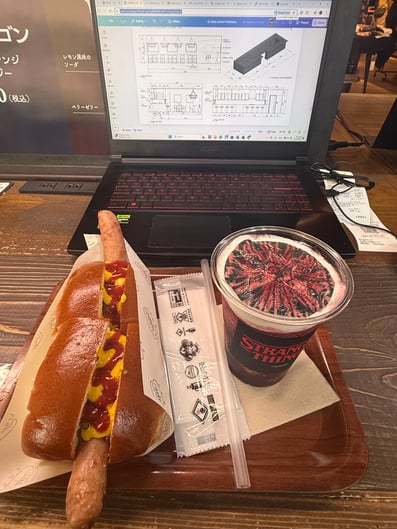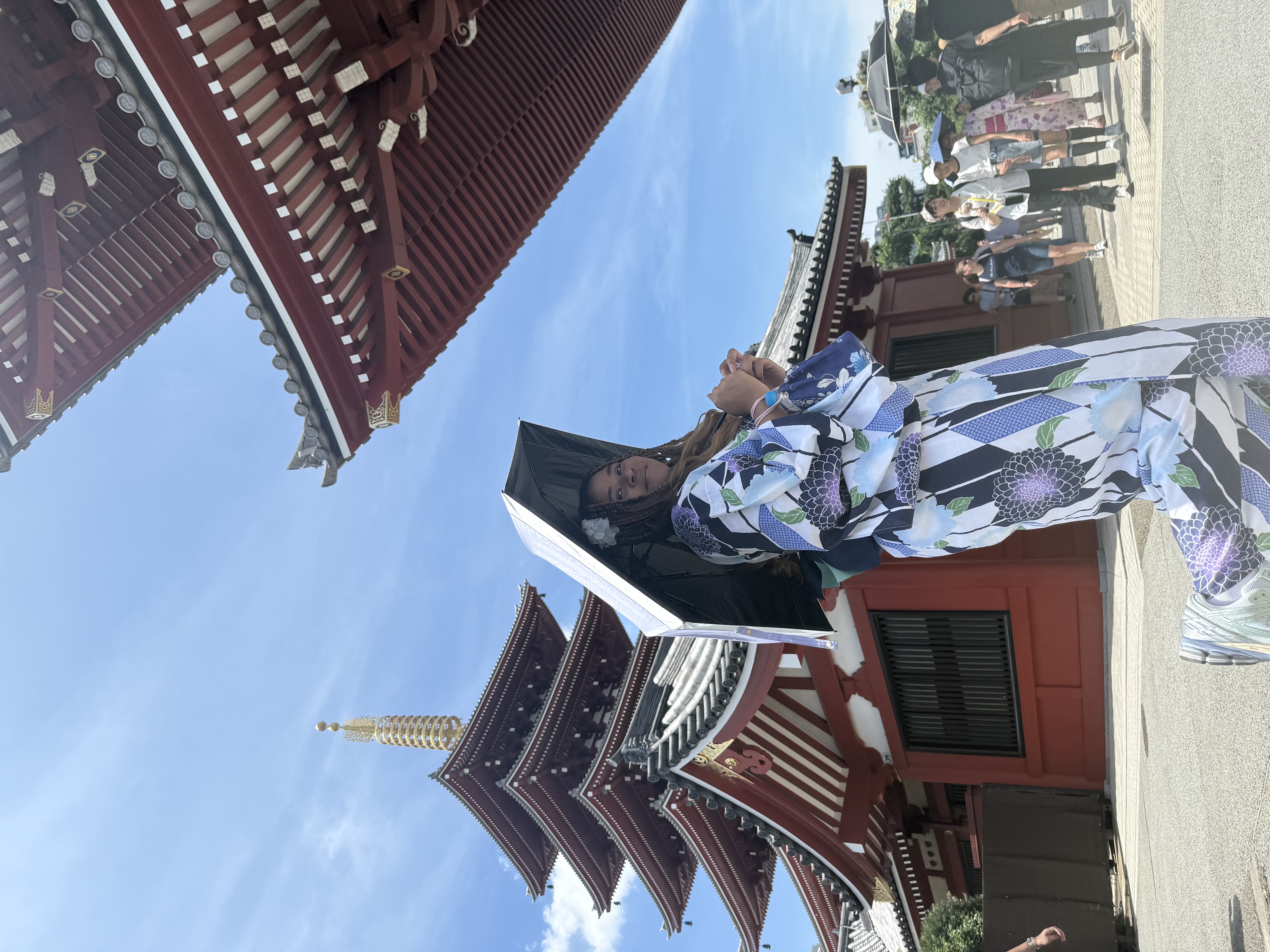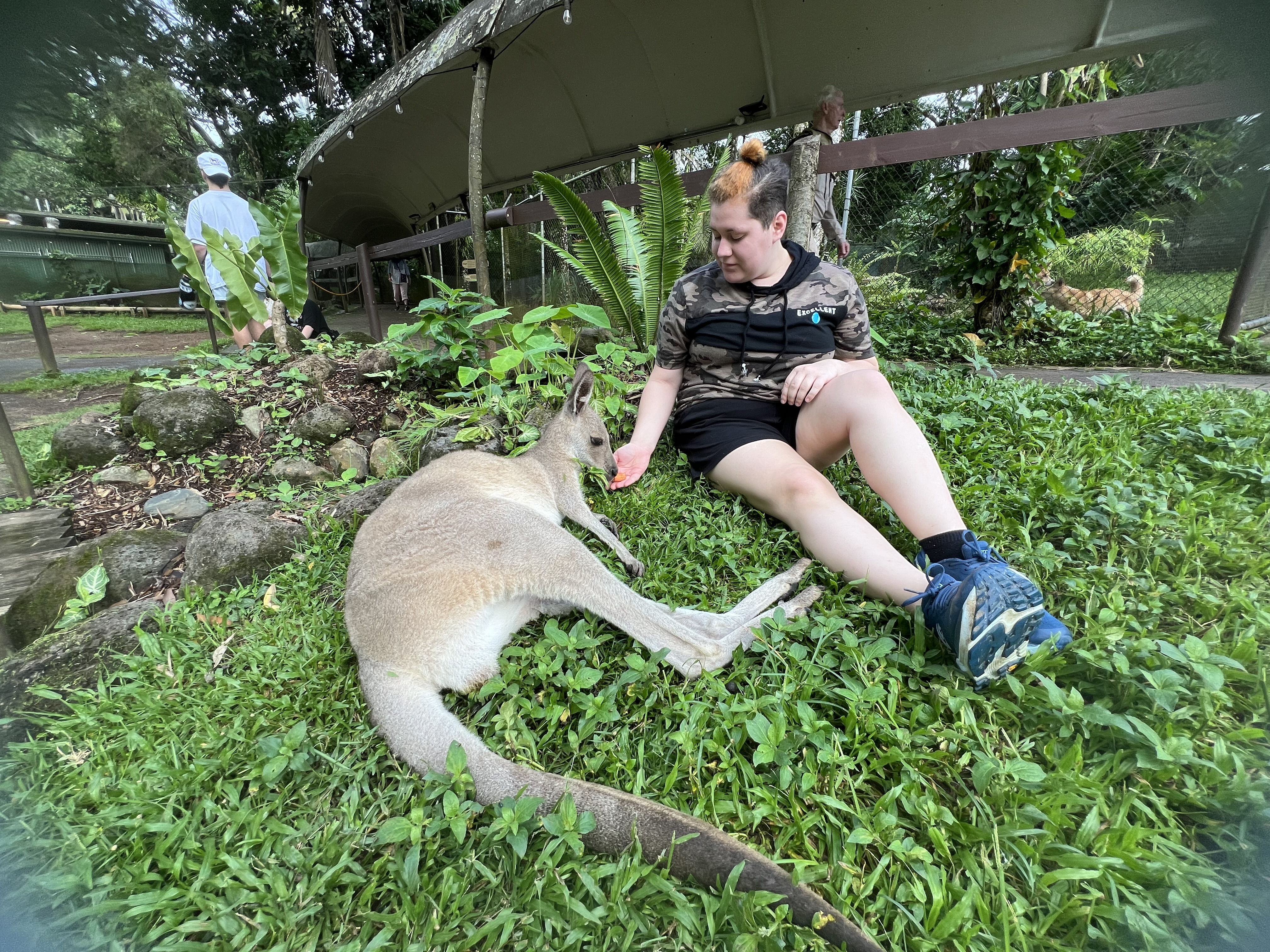As a designer, it’s normal for you to take everything into account anywhere you go. As a student of environmental and interior design, this was one of the most rewarding experiences of my life. My first consideration when traveling in the U.S. is the exits and the structural layout. Going places in Japan allowed me to observe that, as well as other cultural choices.
I wondered why paper, wood, and straw were widely used culturally, and I noticed that it has a lot to do with environmental awareness, as these materials are usually used for natural preservation and cultural purposes. As well as climate, I think it has a lot to do with Japan's geography. Nevertheless, materials and space in Japan are very different from those in America, which made my project more challenging. My experience and work ethic have improved as a result of a few habits and lessons I have acquired here, as well to learn more about the cultural design choices of Japanese design.
 There are so many things to take into account. Structural, electrical, plumbing, and much more. While I still have much to learn, I knew that this was no easy task. So to make my learning experience easier, I started exploring different cities and prefectures. I wanted to take in as much influence and information as possible. For example, I had to do furniture design using joinery techniques. It was very challenging, as I didn’t know what joinery meant. But as I did more research and sketches, I started to grasp the concepts and techniques. I still think it was one of the most difficult tasks for me, as I had never been taught how to do joinery on drafting software. I was enlightened to find a temple that was constructed using joinery, which sharpened my mind even more.
There are so many things to take into account. Structural, electrical, plumbing, and much more. While I still have much to learn, I knew that this was no easy task. So to make my learning experience easier, I started exploring different cities and prefectures. I wanted to take in as much influence and information as possible. For example, I had to do furniture design using joinery techniques. It was very challenging, as I didn’t know what joinery meant. But as I did more research and sketches, I started to grasp the concepts and techniques. I still think it was one of the most difficult tasks for me, as I had never been taught how to do joinery on drafting software. I was enlightened to find a temple that was constructed using joinery, which sharpened my mind even more.
During my time here, while my internship circled around commercial design, i was interested in residential design as well. So I went with a friend to the Museum of Home Design, where I was able to learn more about residential layouts, structures, and materials as well. I saw that some had similar materials and principles as commercial spaces, which I found interesting because it communicated to me that certain design traits and principles can cross over into both public and private spaces.
 As I moved on from furniture design, I was presented with the opportunity to design a restaurant layout for a client. I was very surprised, as I was a real client I had worked for before, so I wanted to do the best that I could. The restaurant revolved around Mexican tastes with an American diner layout. I started to study designs in restaurants and cafes, documenting small things such as bamboo stair rails and mosaic tiles in cafes. I would journal and write things down to get the gist of design choices. After doing research, I was able to start with a few layouts, eventually coming up with one that worked. I spent multiple critiques and days exploring buildings, and while I have much to learn, I feel like being here gave me a good footing as well as first-hand experience.
As I moved on from furniture design, I was presented with the opportunity to design a restaurant layout for a client. I was very surprised, as I was a real client I had worked for before, so I wanted to do the best that I could. The restaurant revolved around Mexican tastes with an American diner layout. I started to study designs in restaurants and cafes, documenting small things such as bamboo stair rails and mosaic tiles in cafes. I would journal and write things down to get the gist of design choices. After doing research, I was able to start with a few layouts, eventually coming up with one that worked. I spent multiple critiques and days exploring buildings, and while I have much to learn, I feel like being here gave me a good footing as well as first-hand experience.
 This may seem small, but one of the best things I learned about that I find to be pretty useful is designing catering to the rainy season. When designing the restaurant, I included umbrella storage as well as recording my observations on gadgets that make it easier for people with umbrellas inside of places. And although baskets are for bag storage to prevent clutter in the space and more cleanliness in restaurants, they also help if your bag is wet from a rainy day, preventing wet floors and accidents most of the time. These things are usually seen in almost every establishment, and can be considered something that is always added to a space by default when designing a place in Japan. I felt accomplished knowing that I was able to, as this has helped me learn about products and styles that are normally added in spaces, and the differences between Japanese and American design principles.
This may seem small, but one of the best things I learned about that I find to be pretty useful is designing catering to the rainy season. When designing the restaurant, I included umbrella storage as well as recording my observations on gadgets that make it easier for people with umbrellas inside of places. And although baskets are for bag storage to prevent clutter in the space and more cleanliness in restaurants, they also help if your bag is wet from a rainy day, preventing wet floors and accidents most of the time. These things are usually seen in almost every establishment, and can be considered something that is always added to a space by default when designing a place in Japan. I felt accomplished knowing that I was able to, as this has helped me learn about products and styles that are normally added in spaces, and the differences between Japanese and American design principles.
Feedback is one of the most important aspects for me on this, as critiques are highly valued within my field of work. After receiving feedback of my overall performance, I was able to think of some areas I wish to grow in, such as presenting and team communication, and collaboration. This is mainly because I feel like more time collaborating with team members throughout my time pursuing interior design at school and work would help me push my communication skills as well. It is something I plan to reflect on and use to become an even better version of myself.

Design wasn’t the only thing that I had to put a lot of time into learning about when coming to another country. It was also communication styles, presentation skills, etiquette, timeframes, and more. While I have experience in these areas, coming to another country with a very different culture leads me to take baby steps to learn it all over again.
Overall, my advice to potential students and future CIS scholars is that as a foreigner, you won’t get everything right away, and you’re not expected to. As long as you show that you’re willing to be aware of, learn, or adapt to things within one’s culture, the experience can become a lot easier for you and help you progress further within your field of work.
 Between participating in meetings, traveling to sites, going to design conventions, having lunch with my coworkers, and designing restaurants and furniture, I believe that my experience was very fruitful and eye-opening. Working in another country is hard, and so is relearning things within your field because it is more different back at home, but being willing to take extra time and effort to learn what you need to become dedicated to your line of work is what matters the most.
Between participating in meetings, traveling to sites, going to design conventions, having lunch with my coworkers, and designing restaurants and furniture, I believe that my experience was very fruitful and eye-opening. Working in another country is hard, and so is relearning things within your field because it is more different back at home, but being willing to take extra time and effort to learn what you need to become dedicated to your line of work is what matters the most.
Learn more about studying abroad in Japan here!
Blog by Kiera Bowman, Georgia State University
Intern in Tokyo, Summer 2025





 There are so many things to take into account. Structural, electrical, plumbing, and much more. While I still have much to learn, I knew that this was no easy task. So to make my learning experience easier, I started exploring different cities and prefectures. I wanted to take in as much influence and information as possible. For example, I had to do furniture design using joinery techniques. It was very challenging, as I didn’t know what joinery meant. But as I did more research and sketches, I started to grasp the concepts and techniques. I still think it was one of the most difficult tasks for me, as I had never been taught how to do joinery on drafting software. I was enlightened to find a temple that was constructed using joinery, which sharpened my mind even more.
There are so many things to take into account. Structural, electrical, plumbing, and much more. While I still have much to learn, I knew that this was no easy task. So to make my learning experience easier, I started exploring different cities and prefectures. I wanted to take in as much influence and information as possible. For example, I had to do furniture design using joinery techniques. It was very challenging, as I didn’t know what joinery meant. But as I did more research and sketches, I started to grasp the concepts and techniques. I still think it was one of the most difficult tasks for me, as I had never been taught how to do joinery on drafting software. I was enlightened to find a temple that was constructed using joinery, which sharpened my mind even more. As I moved on from furniture design, I was presented with the opportunity to design a restaurant layout for a client. I was very surprised, as I was a real client I had worked for before, so I wanted to do the best that I could. The restaurant revolved around Mexican tastes with an American diner layout. I started to study designs in restaurants and cafes, documenting small things such as bamboo stair rails and mosaic tiles in cafes. I would journal and write things down to get the gist of design choices. After doing research, I was able to start with a few layouts, eventually coming up with one that worked. I spent multiple critiques and days exploring buildings, and while I have much to learn, I feel like being here gave me a good footing as well as first-hand experience.
As I moved on from furniture design, I was presented with the opportunity to design a restaurant layout for a client. I was very surprised, as I was a real client I had worked for before, so I wanted to do the best that I could. The restaurant revolved around Mexican tastes with an American diner layout. I started to study designs in restaurants and cafes, documenting small things such as bamboo stair rails and mosaic tiles in cafes. I would journal and write things down to get the gist of design choices. After doing research, I was able to start with a few layouts, eventually coming up with one that worked. I spent multiple critiques and days exploring buildings, and while I have much to learn, I feel like being here gave me a good footing as well as first-hand experience. This may seem small, but one of the best things I learned about that I find to be pretty useful is designing catering to the rainy season. When designing the restaurant, I included umbrella storage as well as recording my observations on gadgets that make it easier for people with umbrellas inside of places. And although baskets are for bag storage to prevent clutter in the space and more cleanliness in restaurants, they also help if your bag is wet from a rainy day, preventing wet floors and accidents most of the time. These things are usually seen in almost every establishment, and can be considered something that is always added to a space by default when designing a place in Japan. I felt accomplished knowing that I was able to, as this has helped me learn about products and styles that are normally added in spaces, and the differences between Japanese and American design principles.
This may seem small, but one of the best things I learned about that I find to be pretty useful is designing catering to the rainy season. When designing the restaurant, I included umbrella storage as well as recording my observations on gadgets that make it easier for people with umbrellas inside of places. And although baskets are for bag storage to prevent clutter in the space and more cleanliness in restaurants, they also help if your bag is wet from a rainy day, preventing wet floors and accidents most of the time. These things are usually seen in almost every establishment, and can be considered something that is always added to a space by default when designing a place in Japan. I felt accomplished knowing that I was able to, as this has helped me learn about products and styles that are normally added in spaces, and the differences between Japanese and American design principles.
 Between participating in meetings, traveling to sites, going to design conventions, having lunch with my coworkers, and designing restaurants and furniture, I believe that my experience was very fruitful and eye-opening. Working in another country is hard, and so is relearning things within your field because it is more different back at home, but being willing to take extra time and effort to learn what you need to become dedicated to your line of work is what matters the most.
Between participating in meetings, traveling to sites, going to design conventions, having lunch with my coworkers, and designing restaurants and furniture, I believe that my experience was very fruitful and eye-opening. Working in another country is hard, and so is relearning things within your field because it is more different back at home, but being willing to take extra time and effort to learn what you need to become dedicated to your line of work is what matters the most.